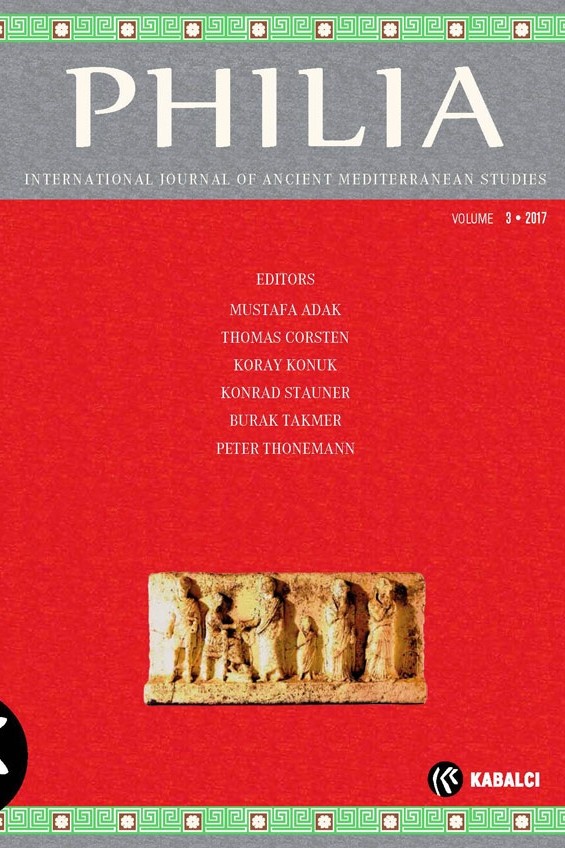Isparta Arkeoloji Müzesi’nden Yeni Yazıtlar
Bu makalede Isparta Müzesi’nden beş adet mezar yazıtı tanıtılmaktadır.
Eserlerin hepsi Roma Dönemi’ne aittir. Buluntu yerleri belli olmayan ilk üç
stel antik Conane çevresinde bulunan mezar taşlarıyla stilistik açıdan büyük
benzerlik göstermektedir. Bu taşlar muhtemelen Gönen İlçesi’nden müzeye
getirilmiştir. Diğer iki taş Roma Dönemi’ne ait torso biçimli mezar taşlarıdır.
Taşların tabanında görülen ve Pisidia Bölgesine özgü isimler, bölge halkının
özellikle Roma Döneminde torso türünde mezar taşlarını yaygın olarak kullanmış
olduklarını göstermektedir.
Anahtar Kelimeler:
Pisidia, Konana, mezar yazıtları, şahıs isimleri
Isparta Arkeoloji Müzesi’nden Yeni Yazıtlar
In this article five gravestones from Isparta Archaeology Museum are
presented. All stones belong to the Roman Imperial Period. The first three gravestones,
in the shape of stelae, whose provenance are unknown, are similar to the
gravestones stylistically found around the ancient city of Conane. These stones
were probably brought to the museum from the county of Gönen. The other two
stones, in the shape of a torso, probably brought to the museum from the
ancient city of Seleuceia Sidera, belong to the Roman Period as well. The names
which are seen on the base of these stones endemic to the region of Pisidia,
show that the inhabitants of this region commonly used these kind of stones, in
the shape of a torso, especially in the Roman Period.
Keywords:
Pisidia, Conana, sepulchral inscriptions, torso,
___
- Haspels 1971 C. H. Emilie Haspels, The Highlands of Phrygia. Sites and Monuments, 2 vols, Princeton 1971.
- Iversen 2012 P. A. Iversen, Inscriptions from Pisidian Konane and the Surrounding Area, Epigraphica Anatolica 45, 2012, 103–152.
- Sterrett 1888a J. R. S. Sterrett, An Epigraphical Journey in Asia Minor (during the summer of 1884), Papers of The American School of Classical Studies at Athens, 2, 1883/1884, Boston 1888.
- Sterrett 1888b J. R. S. Sterrett, The Wolfe Expedition to Asia Minor (during the summer of 1885), Papers of The American School of Classical Studies at Athens, 3, 1884/1885, Boston 1888.
- ISSN: 2149-505X
- Başlangıç: 2015
- Yayıncı: Kabalcı Yayıncılık
Sayıdaki Diğer Makaleler
İmparator Hadrianus’un Mysia ve Bithynia’da İmar Projeleri
ΕΡΜΗΝΕΙΑ. Resmi Misafirlik ile ilgili sacrae litterae’nin Yunanca Çevrileri
Antinoupolis Kenti’nden bir Ephebos Listesi’ne ait Yeni bir Fragman
Lucio DEL CORSO, Rosario PİNTAUDİ
Herakleia Pontike’li Historiograflar ve Eserleri
Bithynia’da «Ünlü Cassius’lar»
Karia’da Yunanca Epigramlar – Yerli Nüfusun Helenleşmesine dair Veriler
Judeo-Hıristiyan Tarih Yazıcılığı, Oriyentalizm, Eski Anadolu Kültürleri, Arkeoloji ve Türkler
